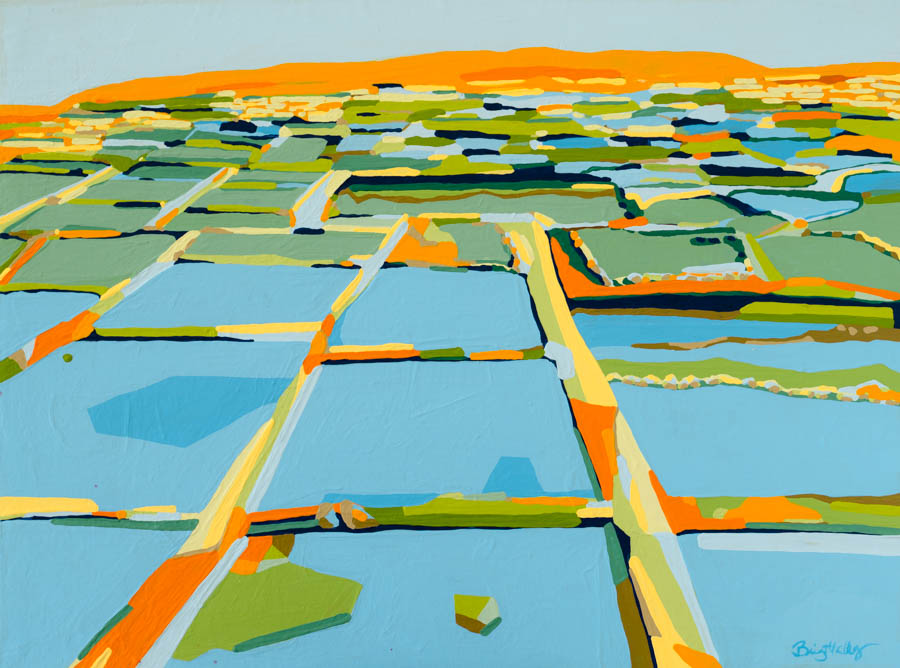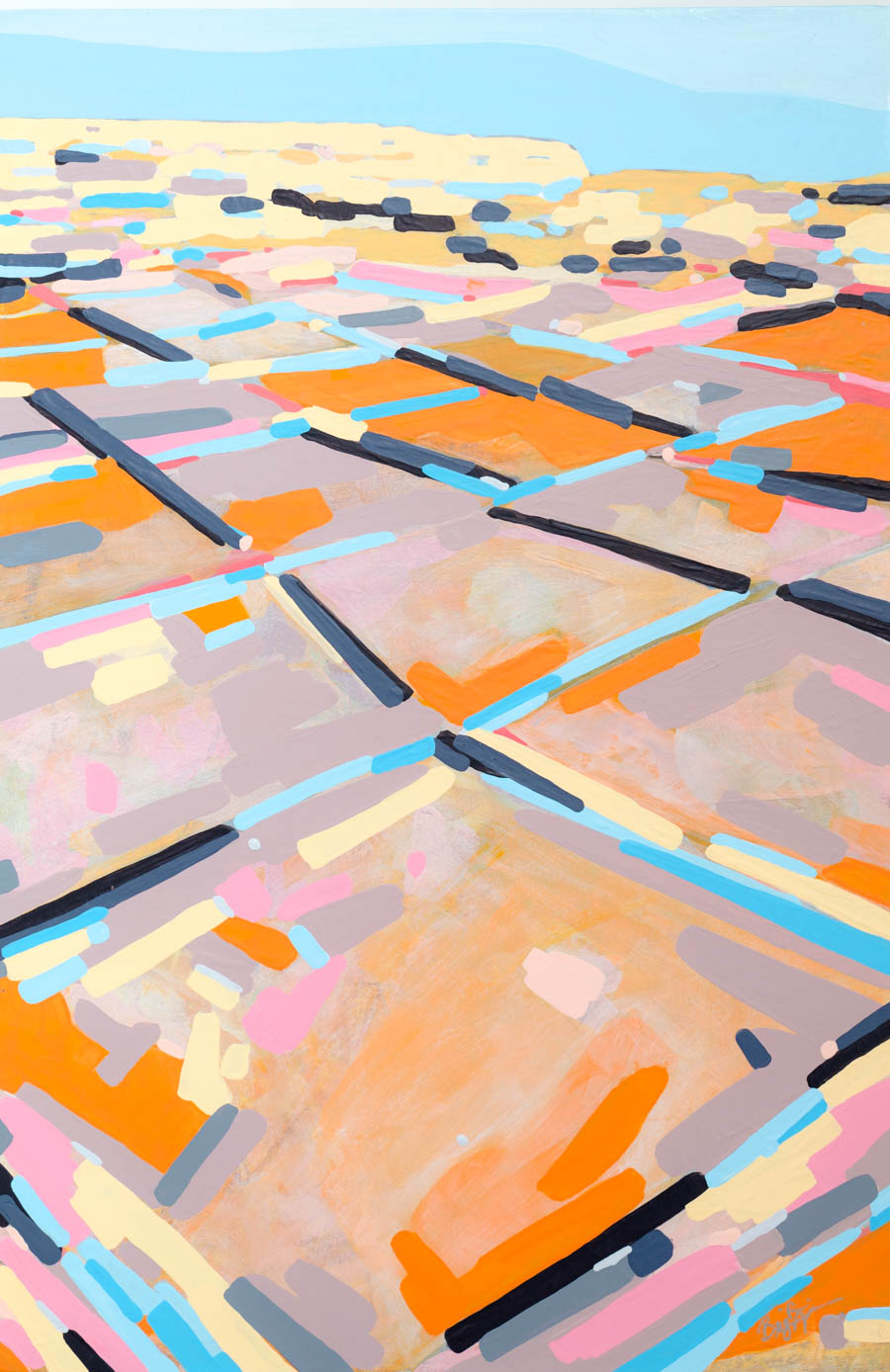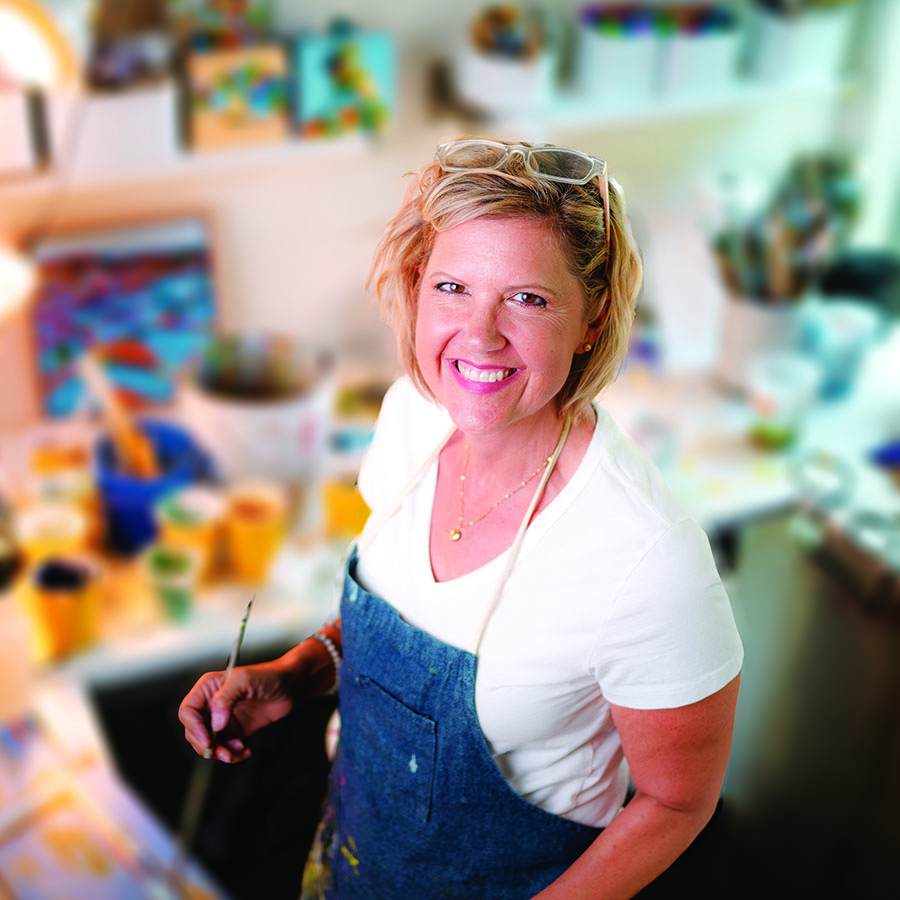For Brigitta Wagner Sultana, painting is not a job title. It’s not a habit, to be picked up or put down, or an occupation, but rather a part of who she is. Like being a mother or a wife, painting and creating art is instilled into her everyday life, a role just as natural as the other two. It’s a vocation that has followed her for years, from her time in college to working in television in New York and graphic design in Florida to now, in her full-time role as a mother of two. “I never stopped painting after I graduated college. I always did it as a creative outlet, other than what I was doing in graphic design,” says Sultana. “As an artist, you never stop.”

ARTWORK BY BRIGITTA SULTANA. PHOTOGRAPHY BY WES ROBERTS.
That attitude is what has led to Sultana’s latest exhibition, Emerge, opening October 7th at the Mara Art Studio and Gallery, her first gallery opening since 2010. “I haven’t really shown since then, because I had another baby and life just kind of took over, but even though you get detoured along the way, you never stop creating,” says Sultana. While her previously shown work featured collages, her work in Emerge has taken a new direction—one that fully infuses family and art. “Before, I just created what I wanted to at the time. There wasn’t a specific subject matter,” attests Sultana. “Now, I feel like I have a specific subject line that I’m working on and a methodology for working on it–it’s just taken me this long to figure it out.”

ARTWORK BY BRIGITTA SULTANA. PHOTOGRAPHY BY WES ROBERTS.
Sultana will show paintings from her Stones and Salt Flats series, respectively. This newer work focuses on the geometric angles of landscapes. Take the Salt Flat series for instance, which derives its inspiration from the salt pans that line the coast of Gozo, Malta. Sultana, whose husband hails from Malta, visited the area on a family trip. “The graphic design part of me was drawn to the angles and depth perception of these very geometric salt flats. Even though I don’t really practice much graphic design anymore, I still have an eye for it and can’t get rid of it—it’s evident through my work,” says Sultana. In the Salt Flats series, Sultana creates creative renditions of the geometric landscapes of these already somewhat surreal salt pans. Her paintings are not abstract, but not exact either, lying somewhere between the two styles, spawned from her own photography and imagination alike. While all are acrylic on canvas, they vary widely in color, tone, and style: some use soft brush strokes to create lighter blushes of color that shimmer between the rectangular confines of the salt pans while others create harder and more abstract layers that stack amongst each other. All however, derive from a common source –her photography. “One of my thesis projects for my final show in college included constructed landscapes that consisted of a series of objects that I manipulated to look like landscapes. I feel like the Salt Flats had the same feel to them–while they look very natural in terms of being close to the water and carved into the limestone there is this geometric and man-made element to them as well. It’s constructed, but it’s also a natural phenomenon as well,” says Sultana.
In both the Salt Flats and Stones series, Sultana works from a series of images that she takes herself, at times transferring the image onto the canvas as a template or merely using it as a muse. “The Stones series was inspired because my kids and their cousins were building a wall and just having fun with these stones on a sandy beach. I just started photographing them and then the series was kind of initiated by accident. I just shot away at all the different layers of rocks and that’s how that happened,” says Sultana. “Both the Salt Flats and Stones series emerged from those experiences and are intertwined in a way.” While for the paintings shown in Emerge, Sultana’s process starts with photography, it’s not entirely predicated on it. For example, not every single painting is based upon an image transfer—her process is more organic, at times taking days, weeks, or even months to complete a painting. Perhaps it’s because in the midst of her painting, is her life, the balancing act of being a dutiful mother and an artist.









